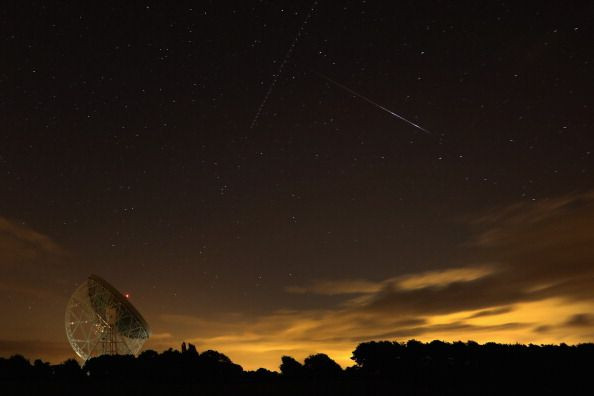What Is The Lyrid Meteor Shower? Annual Meteor Shower Will Dot The Overnight Sky
KEY POINTS
- The annual meteor shower begins on April 16, continues until April 25, and is best viewed overnight from April 21 to April 22
- The meteors are debris from CometC/1861 G1 Thatcher during its 415 year orbit around the Sun
- The shower typically produces around 15 to 20 meteors an hour, but on rare occassions has produced around 100 meteors an hour
The night sky will be lit up Tuesday due to the 2020 Lyrid meteor shower. While not the biggest meteor shower of the year, viewers can expect to see a sky dotted by at least 15 to 20 meteors an hour.
As the world grapples with the coronavirus, the Lyrid meteor shower is an event that doesn't require social distancing. So what exactly is the Lyrid meteor shower?
The Lyrid meteor shower is underway till April 30th. There will be between 10-20 shooting stars per hour.
— Leah Holiove (@Leah_Holiove) April 18, 2020
The best time is late this Sunday April 19th to Wednesday April. 22nd! pic.twitter.com/tCWwOUD4n7
The April meteor shower involves pieces of debris that break off of CometC/1861 G1 Thatcher during its 415-year orbit of the Sun. It typically begins on April 16 and continues until April 25, with April 21 and April 22 being the peak. This is one of the longest recorded orbiting periods for any meteor-producing comet. It is one of the oldest meteor showers on record, having been observed and recorded for nearly 2,700 years. NASA said the first recorded sighting of the Lyrid meteors dates back to China in 687 BC.
The name "Lyrid" was derived because the meteors and debris appear to come from the constellation Lyra the Harp, near the Vega star.
Particles passing Earth hit the upper atmosphere at around 109,600 mph, which is a slower speed than other annual meteor showers. The fastest belongs to the Leonids meteor shower, which hit the atmosphere at around 158,800 mph.
The meteor shower can best be seen by anyone in the Earth’s northern hemisphere starting around sunset. Observers should avoid artificial light and have something to sit or lie down in due to the length of the shower. Once a viewer's eyes have adapted to the dark, they are treated to an overnight shower that peaks during the dark hours just before sunrise.
NASA offered some advice on the best way to watch the overnight meteor shower.
"It is actually better to view the Lyrids away from their radiant: They will appear longer and more spectacular from this perspective," NASA said on its website. "If you do look directly at the radiant, you will find that the meteors will be short—this is an effect of perspective called foreshortening."
On rare occasions, observers can be treated to as many as 100 meteors an hour, though only four showers on record have been this active. NASA said these active showers were recorded in 1803 Virginia, 1922 Greece, 1945 Japan, and 1982 in the U.S.

© Copyright IBTimes 2024. All rights reserved.





















